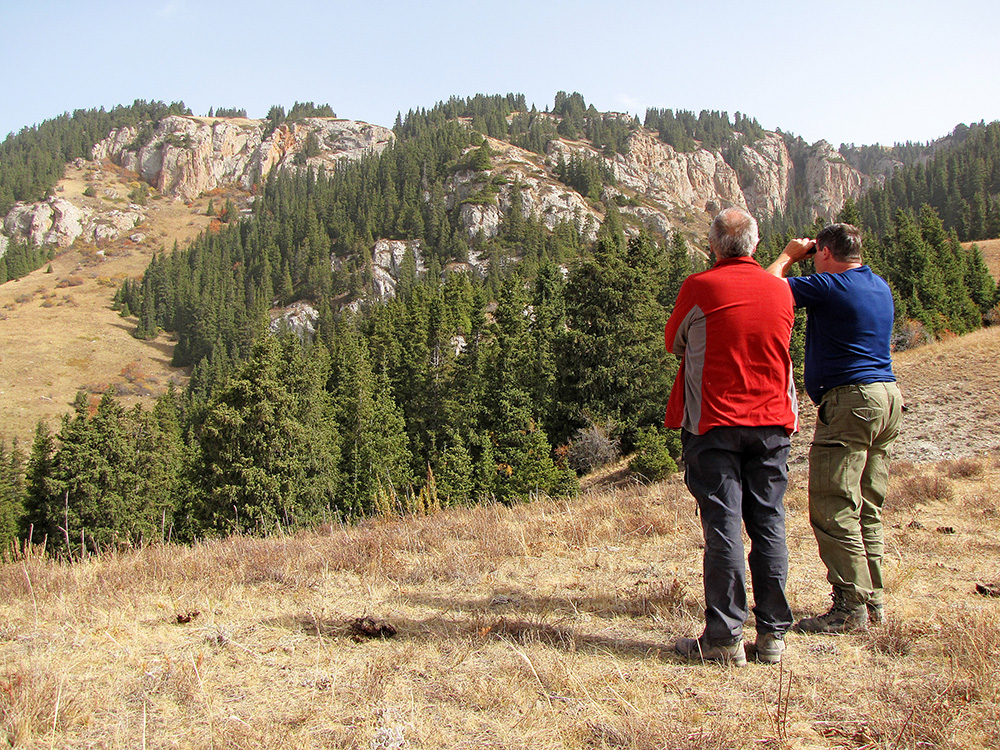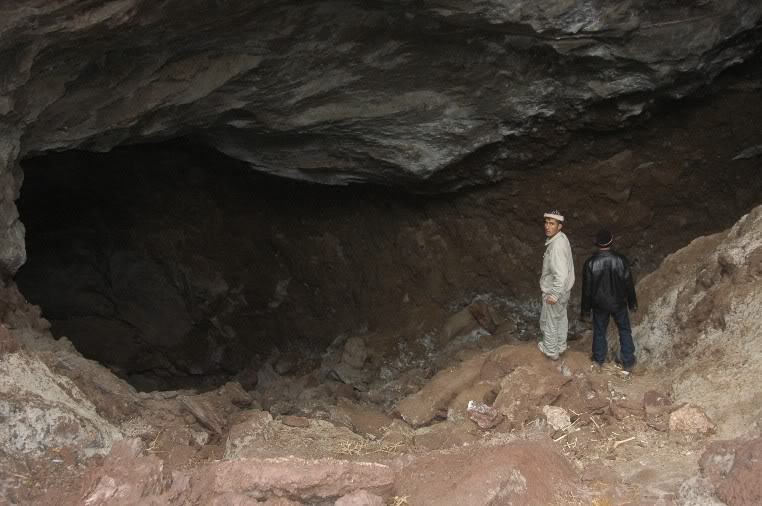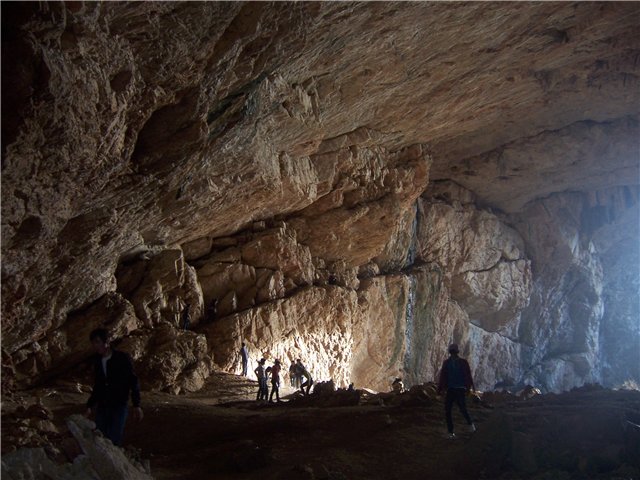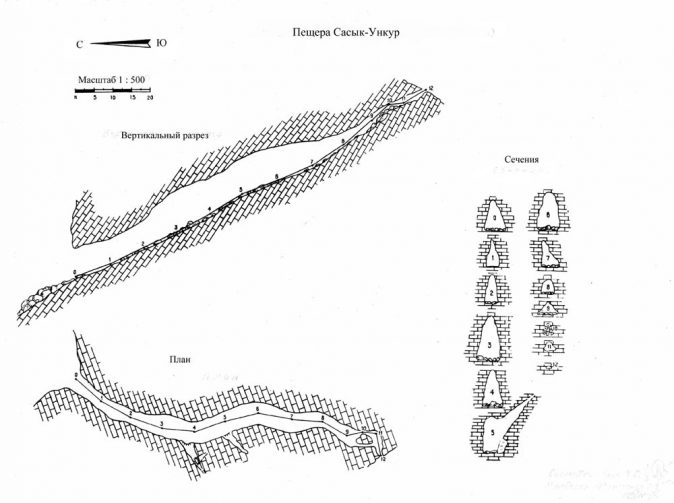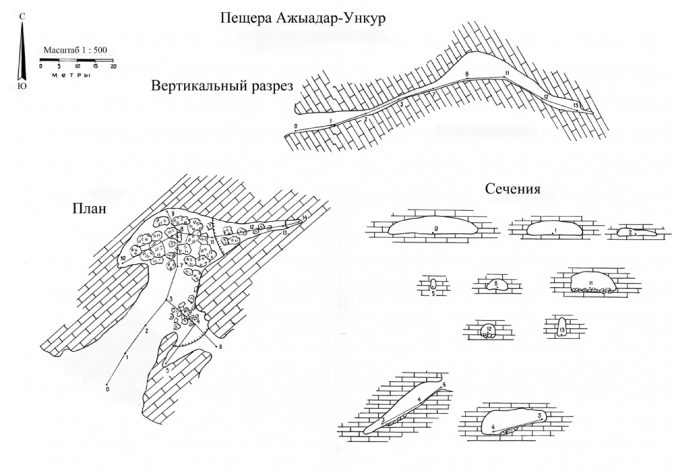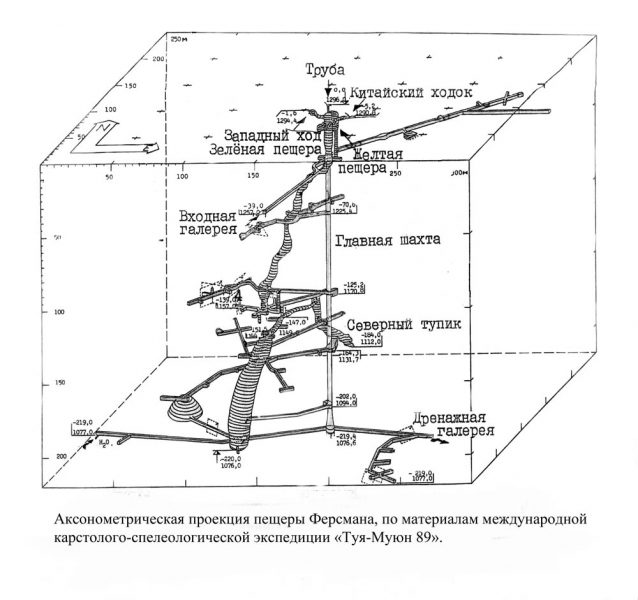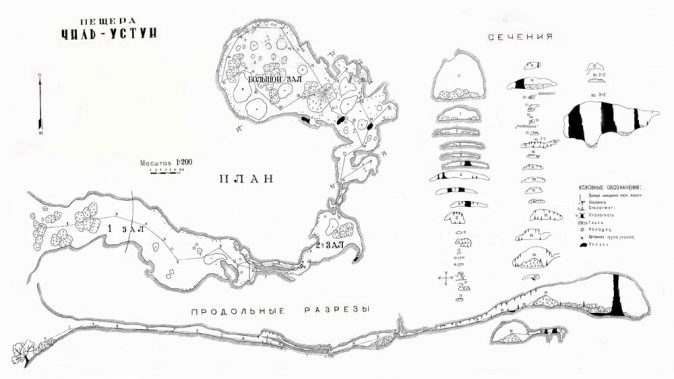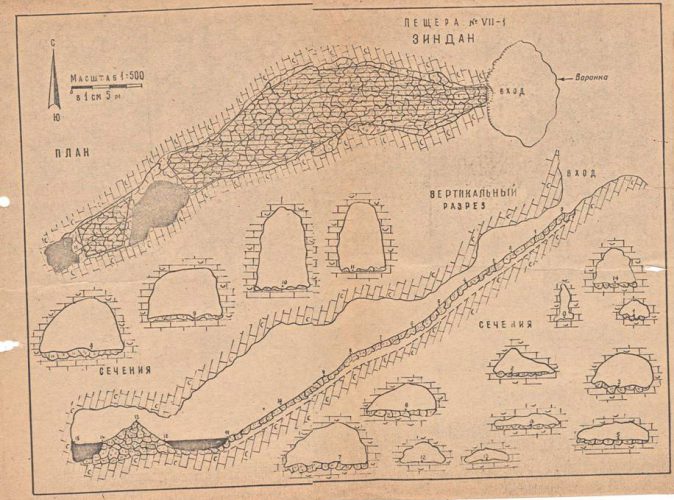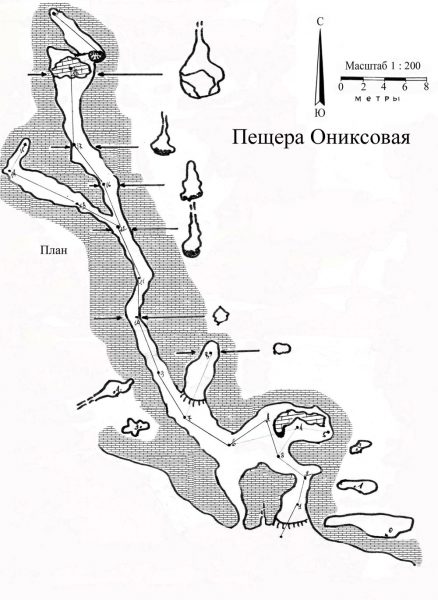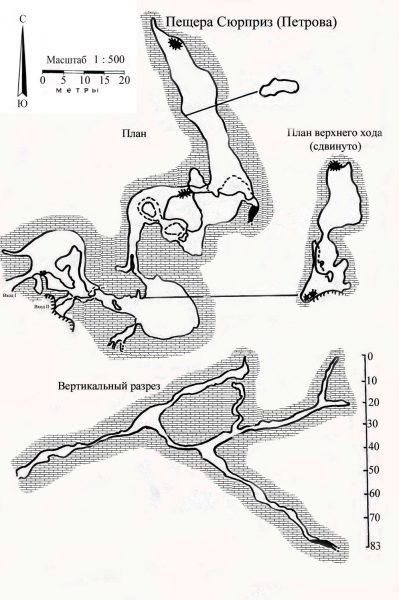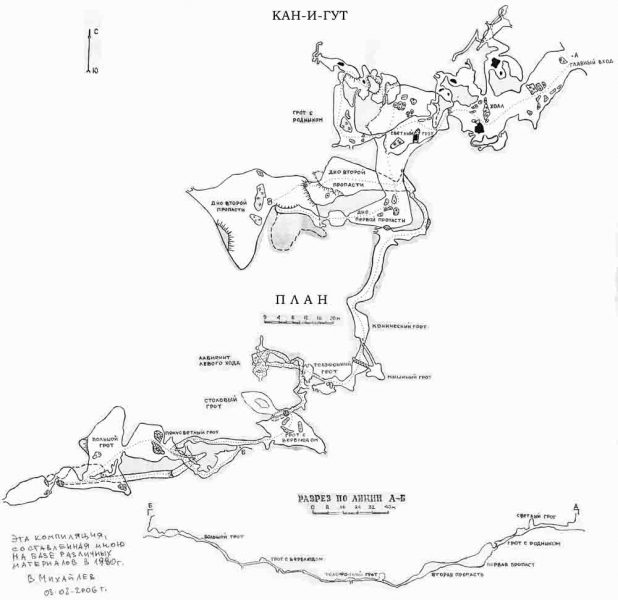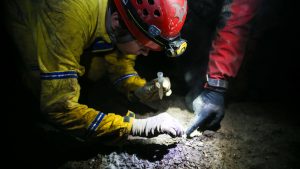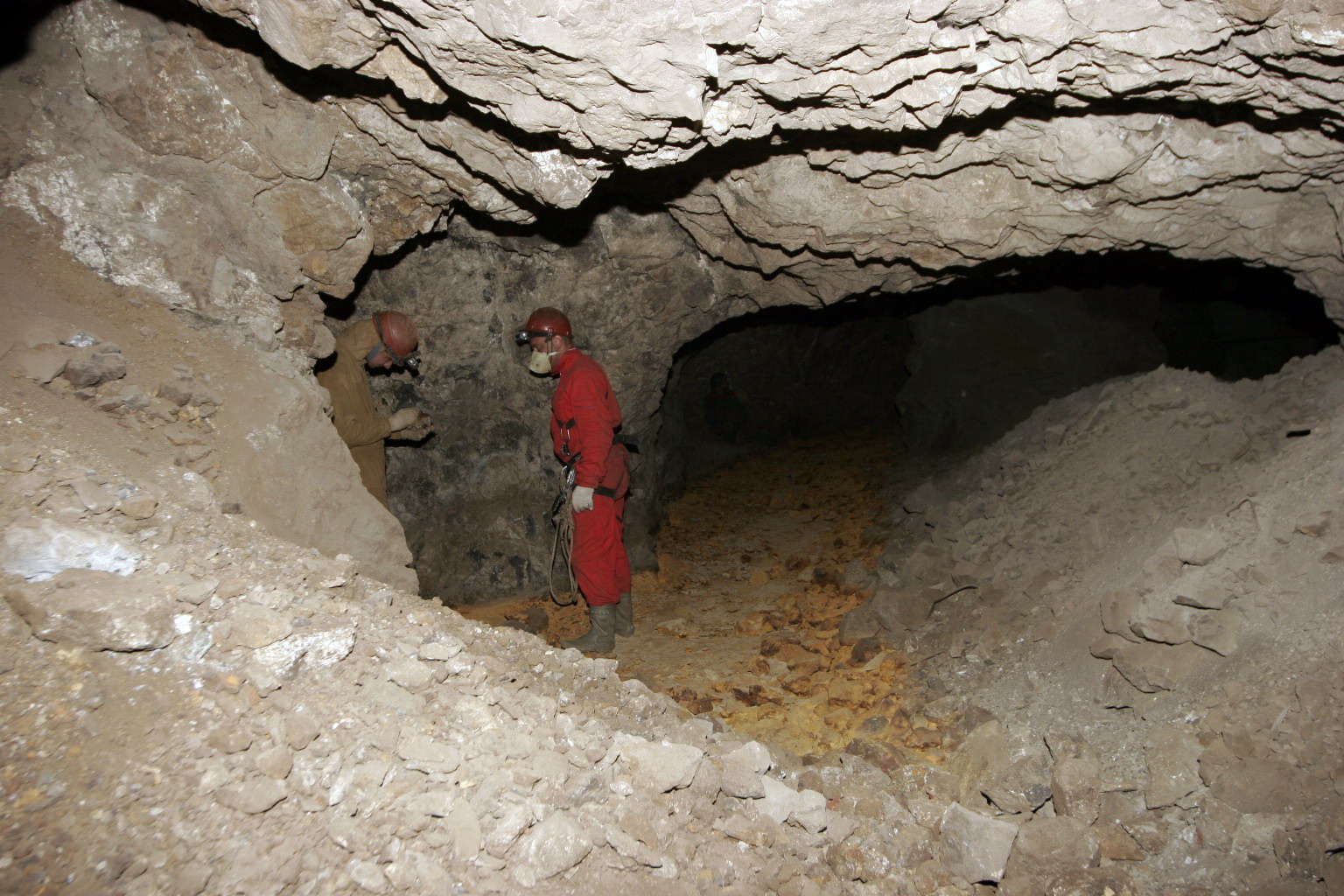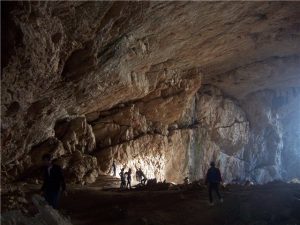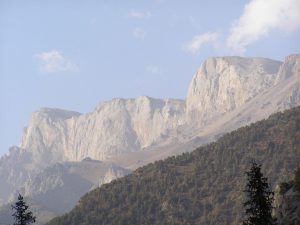
In June 2018 our organization plans to conduct an expedition, the main purpose of which is speleo biological research in the caves of Kyrgyzstan.
At present, Kyrgyzstan is a developing country. Therefore, today, the Government has other tasks that are related to the economy and social development of the population.
At the same time, environmental problems that are associated with the preservation of natural heritage, geological monuments and biological diversity, remain forgotten.
The local population has to survive and earn a living. Problems of protection of unique monuments of nature and rare animals are in the background.
Therefore, our organization decided to draw the attention of the heads of local administrations and the Government to the problem of conservation of rare animals inhabiting caves.
We are engaged in protecting the caves and inhabitants of these caves. Several caves in the south-west of Kyrgyzstan are habitats of rare species of bats and possibly other living organisms.
The results of non-professional monitoring showed that rare species of bats are disappearing.
Local villagers who do not understand the value of these animals sometimes visit caves with torches and violate the fragile ecological conditions of caves in which bats live. As a result, the bats leave their historical dwellings.
During the Soviet Union in 1975, some caves were declared protected areas, as habitats for rare species of bats. Today, times have changed. Officials forgot about the problem of habitat conservation.
In the Red Book of Kyrgyzstan there are 5 species of bats, including 2 species of bats that are in the international red leaf.
| Status | Title | Document |
| LC | Tadarida teniotis | IUCN Red List |
| LC | Barbastella leucomelas | IUCN Red List |
| CD | Otonycteris hemprichi | Red Book of Kyrgyzstan |
| CD | Rinolophus bocharicus | Red Book of Kyrgyzstan |
| CD | Rinolophus hipposideros | Red Book of Kyrgyzstan |
We think that as a result of our expedition project, in which experts from other countries will participate, we will be able to obtain scientific results on the state of the problem.
Perhaps foreign experts will be able to prove that the problem of rare bats today is very relevant. And we hope that the results of the expedition will be the beginning of a new project on the conservation of habitats of rare species of animals.
In addition, in this expedition we invite scientists and graduate students speleo hydrobiologists, as well as entomologists
There are no specialists in speleology biology in Kyrgyzstan, so we want to interest 1-2 young specialists in the problem of protection and study of habitats of rare biological species.
Anyone who wishes to take part in the expedition can send an e-mail to: info@speleo.kg
Working map of the expedition
 The expedition is scheduled for june. working dates of the expedition from 10.06. to 22.06.2018. dates are flexible.
The expedition is scheduled for june. working dates of the expedition from 10.06. to 22.06.2018. dates are flexible.
Duration of the expedition is 2 weeks.
Foundation for the Preservation and xploration of caves provides all the necessary equipment for a field base camp:
– individual tents,
– tents large for the kitchen,
– tents large for the field laboratory,
– tables and chairs,
– electric generator,
– infrastructure for electricity,
– dishes for the kitchen and dining room,
– special safety equipment for work in caves (ropes, anchor bolts and more)
– field toilets
– consumables
For the expedition, we rent off-road vehicles,
– a professional cook will work in the field camp,
– we received all the necessary permits from the government, for research,
– and also, after the expedition we will get permits for the export of biological material to your country,
– we are ready to meet you at the airport and will send you back.
The route of the expedition is designed in such a way that speleobiologists of different profiles can work in caves and their surroundings, using common logistics and base camps.
The route of the expedition includes many caves inhabited by bats, as well as caves with water: lakes and springs. in addition, the route includes karst water springs and vaucluse.
We have chosen the best places for a base camp, where there is drinking water and convenient routes to the caves.
We are ready to organize monitoring with the help of students of biologists for bats at night.
Young kyrgyz assistant biologists are ready to help you, in return for learning new working methods
During the expedition, the mercedes sprinter mini bus will always work with us. almost everywhere there is cellular communication, but not everywhere there is internet.
The cost of participation depends on the number of people.
The numbers coincide with the objects on the map.
In the program of the expedition we suggest exploring caves, which we know as habitats of bats, as well as caves in which there is water in the form of lakes or streams.
In addition, we propose to investigate karst springs, which drain limestone mountain massifs.
We do not confine ourselves to the time that is necessary for research in this or that place. The number of days that is necessary for research in a particular cave depends on the scientists and their tasks.
In the caves of Chil-Ustun, Uluu-Too, our organization together with German colleagues are monitoring the climate of the cave for 7 years already. Perhaps these data will be necessary for further biological analysis.
Program
Arrival in Bishkek. Meeting at the airport. Hotel accommodation. In Bishkek, the presentation of the expedition. Meeting with biologists of the Academy of Sciences of Kyrgyzstan.
Further route to the city of Kerben. Arrival in Buzbu-Too (Western Tien-Shan). Overnight in the field camp.
1. Karst massif of Buzbu-Too. At the base of the limestone massif, there are modern travertines. Now there are springs in the travertines. Local residents claim that in the mountain range they know several caves with bats.
The further route towards Osh city. On the way, spend the night in a field camp in the Jalpak-Tash area.
2. Kara-Ungur cave (Jalpak-Tash Mountains). In the cave flows a stream of water. For today there is no topographic plan for the cave. The length of the cave is about 250 meters, the ceiling converges with the floor of the cave, after which the narrow place in which the flow of water leaves. The cave is formed in gypsum rocks.
Further route to the Tuy-Muyun karst area.
3. Karst region of Tuy-Muyun. Here we plan to establish a base camp. In the karst area there are 8 caves. The longest is 1700 m. All caves belong to the protected area. In 3 caves there are colonies of bats. In 3 caves there are lakes and streams.
4. Fersman cave mine – depth of 260 meters. The lake is at the bottom of the cave. For the descent, we need 200 meters of rope.
From the Fersman cave, along the drainage tunnel (about 1000 meters) flows a water stream that opens into the canyon of Danga. The tunnel (8) is also inhabited by bats.
5. Baritovaya cave. In the cave there are colonies of bats. There is no water in the cave.
6. Azhidaar-Unkur cave. It is officially considered a reserve, as a habitat for rare bats.
7. Surprise cave. At the bottom of the cave there is a lake. It is necessary to crawl along the narrow gallery to the lake. The cave has a hydrothermocarstic genesis. But the lake is not hydrothermal.
From the Tuya-Muyun base camp, specialists in hydrobiology can travel to the northern border of the Pamirs, to the Alai valley (350 km), where the cave Zindan (9) is located. The cave is formed in gypsum rocks. There is a big and deep lake in the cave. The depth of the lake is not known.
During the trip you can stop for the night, in the base camp (3600 м) of climbers, which is located at the peak of Lenin. Or you can spend the night in a guest house in the village of Sarytash. The next day you will return to the base camp of Tuya-Muyun.
From the base camp of Tuya-Muyun, we will be able to make day trips to other caves, which are located in the karst area near the city of Osh.
10. Chil-Ustun cave. Located 30 km from the base camp. In the cave there are lakes that are in the first, second and third halls of the cave. In the spring period, between the first and second halls, a water siphon is formed. At this time, the transition to the second hall is closed.
The cave also has colonies of bats that also live in the third hall of the cave.
To climb into the cave, we must use about 350 meters of rope to organize a safe climb to the entrance to the cave. Basically, the rope is necessary for the organization of handrails along a narrow path.
11. Sasyk-Unkur cave. It is located 35 km north of the base camp. The cave is inhabited by bats. In the cave there is a layer of guano. The thickness of the layer is about 1 meter.
12. Ulu-Too cave. It is located 20 km to the west of the base camp. In the cave there are colonies of bats.
The next stage of the expedition is a trip to the west of Kyrgyzstan.
On the way, study the Absher-Ata vaucluse (13). A large karst spring. The production rate is about 0.5 m3 / s. Here the expedition can stay in the guest house.
14. Further on the way visit the Kalmak-Unkur cave. In the cave there is a lake and bats. And also the cave is of archaeological significance. The cave is located near the city of Kadamzhai near the lake Shakhimardan.
In the area of the village of Kadamzhay are old mines, in which live bats.
15. Ak-Turpak cave. Located in the valley of the river Soh. There are bats in the cave. The cave is formed in gypsum rocks. The length of the cave is about 500 meters
16. Kan-i-Gut cave. The length of the cave is 6000 meters. There is no water in the cave. But here live bats. Near the cave there is a karst spring with a rate of 25 liters / s.
17. Additional object. If there are willing to make an excursion to South Kazakhstan. In the limestone massif of Karatau not far from the city of Taraz (Kazakhstan), there is the Labyrinth cave. The length of the cave is over 700 meters. There are several lakes in the cave. And also in the cave there are bats. 60 years ago, the cave was opened by an artificial mine.
During a one-day trip to Kazakhstan, we will be able to stay at a hotel in the city of Talas (Kyrgyzstan).
Our fund provides equipment for the base camp and expedition:
– individual tents,
– large tents for kitchen and laboratory,
– electric generator,
– mobile toilet,
– dishes for the kitchen and dining room,
– tables, chairs,
– gas,
– satellite connection,
and other equipment.
The price does not include:
– Accommodation in a hotel in Bishkek
If you plan to participate in the expedition, we can invite you to the Google Drive expedition.
TOPOGRAPHY CAVES
